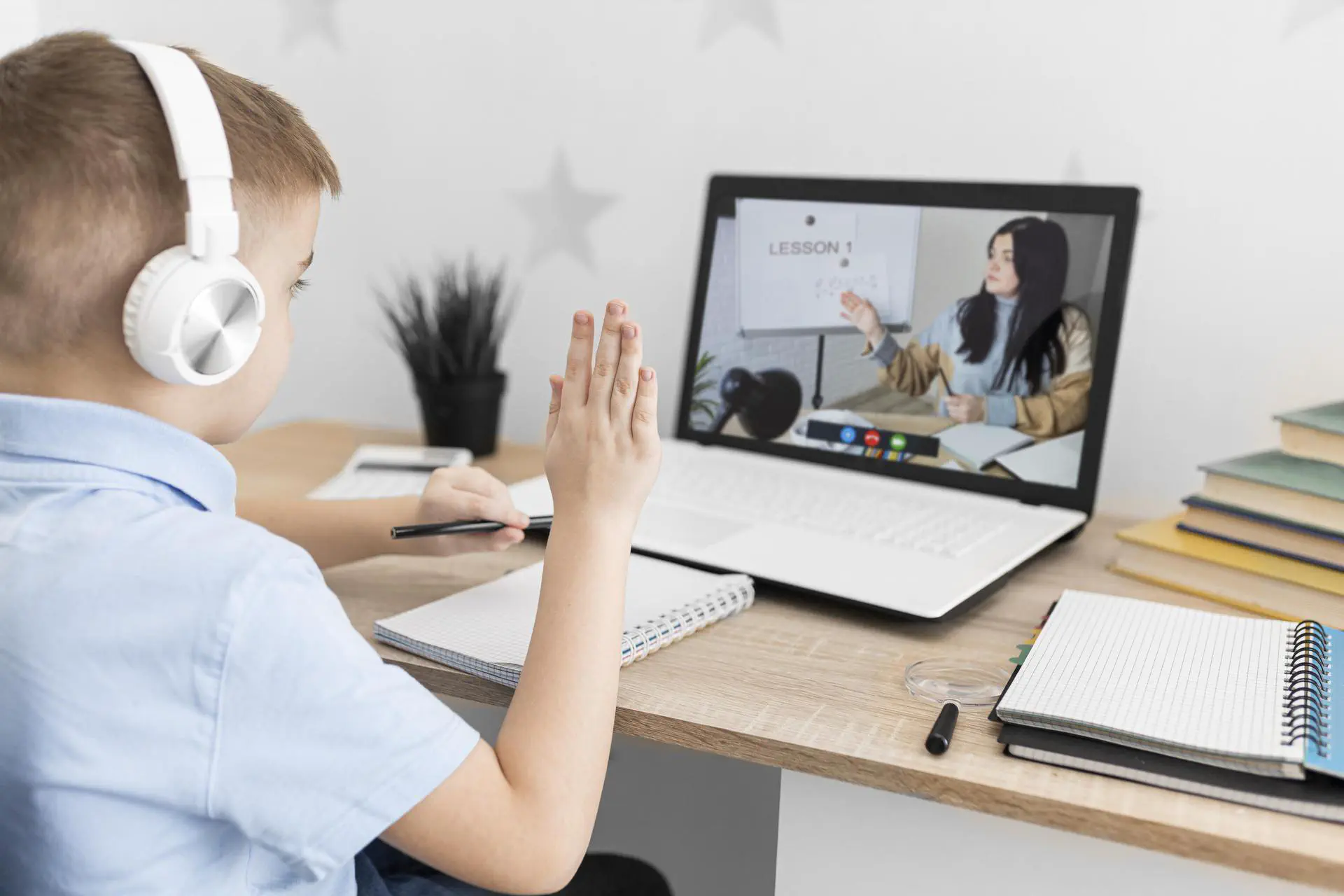How to Design Corporate eLearning Solutions for Young Employees

Just a few years ago, nobody expected that the issue of employee retention would become so global. Today, more than 35% of the American workforce consists of millennials. This generation dictates its own standards, changing the game, and forcing HR managers and recruiters to reconsider their traditional approaches. They earned a reputation as people who switch jobs more often than any other generation of employees. They are very picky in everything about work, so companies need to adjust the working environment to their lifestyle.
Why do those young people switch jobs so often? There are many reasons for that, however, there is one reason which looks especially dangerous — millennials are not engaged in their jobs. According to the statistics, the majority of millennial employees plan to leave their current companies by 2020. In 2015, about 50% of American employees were not engaged. Obviously, many companies don’t want to accept such a situation, which is a reason why they introduce new strategies of corporate training,and custom elearning solutions. eLearning offers countless opportunities for any organization that wants to train and to engage its workforce at the same time.
The majority of employees: who are they?
The efficiency of your training and retaining strategies depends on your understanding of this generation and its traits. Millennials, also known as Generation Y, are people born during the period from the late 80s to the early 2000s. This is the first generation that faced the quick development of digital technologies so they are technologically savvy. In addition, most of them are well-educated, self-confident, and ready for multi-tasking. They have enough energy and like teamwork. They are not afraid of challenges but realize the importance of work-life balance. Such employees are used to getting any information with a few taps on the display so they also want to see the results of their work immediately.
This is the biggest generation since baby boomers, and their share in the American workforce steadily increased over the last 20 years. They work differently than other employees. Although they rely on technologies and can find answers to even the most complicated questions by using Wikipedia and Google, the social factor is also very important to them, especially when it comes to digital communication. They are creative and not afraid of tackling extraordinary problems, searching for creative solutions.
Challenges of training young employees
Training young employees presents unique challenges that require companies to adapt their approaches to accommodate the needs and preferences of this generation. One of the most significant one is meeting employees’ demands for advanced technologies. It’s no secret that young people are heavily dependent on technology, and this trend has only increased over time. They prefer to communicate through text messages rather than face-to-face conversations, which allows them to process information quickly and efficiently. Therefore, to engage them in training, eLearning and e-training solutions that are easily accessible on their smartphones become necessary.
Another challenge is the desire of young employees to learn at their own pace. This extends to their work lives, where they prioritize productivity and value the option of remote work over traditional office models. They view work as an integral part of their daily lives and are willing to devote more time to it if they enjoy their job. They don’t want to be confined to the traditional classroom model, where productivity is measured by the number of hours spent in training sessions. Instead, they prefer flexible and accessible e-learning solutions that allow them to learn new information on their own time and at their own pace.
In response to these challenges, companies must improve their training tactics and maybe even opt for custom e learning software development prioritizing flexibility and accessibility. This includes developing training materials that can be accessed on mobile devices and providing remote training options that allow young employees to learn at their own pace. By doing so, companies can engage young employees and provide them with the training and development they need to succeed in their roles. Moreover, they can leverage e-learning solutions to create a culture of continuous learning and development, which can benefit both the employees and the organization as a whole.
Examples of corporate elearning business solutions
Even though young people learn fast and efficiently, their desire to get information fast has its drawbacks. The attention span of a millennial is less than that of a goldfish. Fortunately, there is such a thing as micro-learning — a method that is characterized by its interactivity and active use of media content. Micro-learning also implies quick exercises that reinforce new knowledge. Unlike traditional training sessions with huge amounts of information, micro-learning is focused on bite-sized lessons that can be immediately used in practice. People can access training materials using their tablets and smartphones, regardless of the types of their platforms.
The youth is also looking for instant rewards. They need to feel a sense of accomplishment, which motivates them to keep learning and to demonstrate better results. In this case, gamification is a great approach that allows them to receive virtual rewards, like points, badges, or currencies. Unlike traditional learning methods, active learning doesn’t make them bored. In addition, the use of multimedia, gamification, virtual and augmented reality technologies allows them to learn small amounts of information fast, involving visual images and encouraging collaboration with their colleagues.
How to design corporate eLearning solutions to train youth
1. Focus on multimedia
You need to adjust your learning management system (LMS) to use more media content. Young people like creative content, and there’s nothing else that would make them more engaged. Use any sorts of media that fit the format of the training course. We suggest using videos that are less than 5 minutes long, taking into account the short attention span. Any graphics, captions, and music are great, just don’t forget to clearly indicate the objectives of a certain lesson.
2. Personalize the learning process
Micro-learning allows you to divide massive blocks of information into small lessons and make learning more personalized. If there are several employees who work on the same material, you can encourage them to participate in discussions on various online platforms and discussion boards. The more they share information with each other, the more engaged they are.
3. Use gamification
Millennials love games, that’s why so many of them want to combine gaming and working. Not only does such an approach make the learning process more interesting, but it also allows employees to receive instant rewards. For example, you can create gamified portals that explain the company’s policies and allow employees to learn about available benefits in a fun way. Such courses can be story-based so that learners will go from one level to another. Such an approach encourages competition and makes learners want to come back.
4. Use social media
According to the statistics, 88% of millennials are more interested in connecting than competing. In addition, this generation spends most of the time on social media, so you must use it if you want them to be more involved in the learning process. Thanks to social media, learners can collaborate and share new knowledge. We suggest integrating social media platforms into your LMS to ensure the maximum efficiency of learning.
Conclusion
The millennial generation is the future of the workforce so companies need to take into account its demands, developing new training strategies that will help make these employees more engaged in order to retain them.
On one hand, young people create many challenges for classic HR management. On the other hand, the development of technologies and new training methods lead to long-lasting results. eLearning allows companies to use social media, gamification, and other effective tools to make the learning process interesting and interactive, which will be appreciated by any generation of employees.
Don't want to miss anything?
Subscribe and get stories like these right into your inbox.
Keep reading

eLearning Mobile App Development: Practical Guide
Educational mobile apps are becoming increasingly popular. Dive into our comprehensive e-learning mobile app development guide to gear up for the launch of your own project.

Virtual Classroom Software: Features and Benefits
Want to build your own virtual classroom software? In our blog post, we share our practical recommendations on how to do it.

How to Build an Online Education Portal?
With an idea to build an e-learning platform, care to find a good education portal development company and carefully plan your steps. Our article is your guide on this journey.
Contact us
Let's explore how our expertise can help you achieve your goals! Drop us a line, and we'll get back to you shortly.